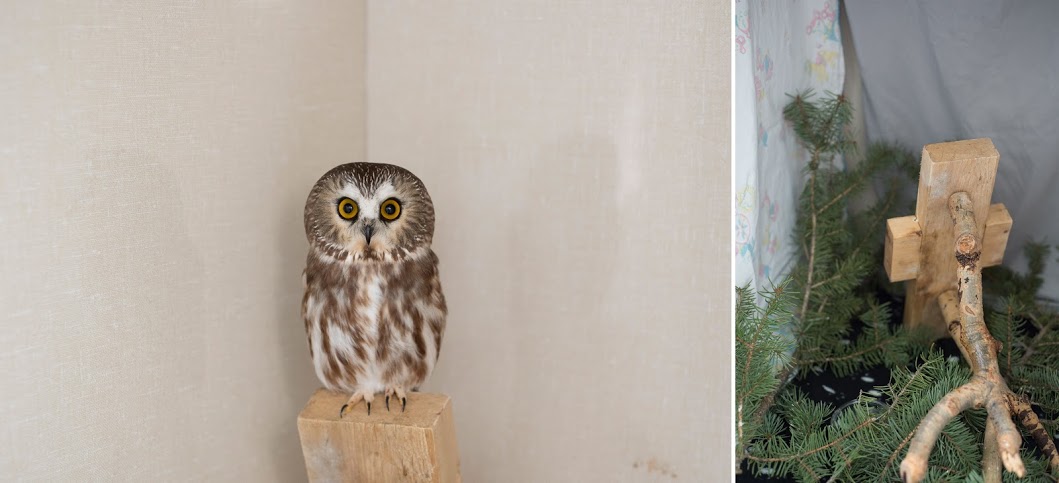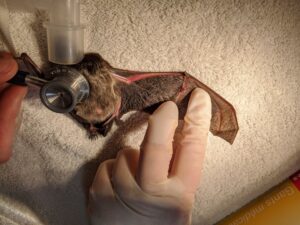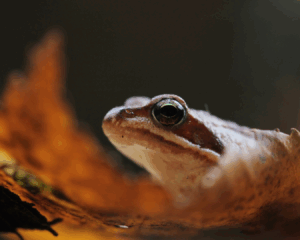Today’s blog is going to walk you through a typical shift at AIWC as a rehabilitation assistant volunteer. Keep in mind, we are currently in the slow season and have fewer patients in our care than we have during the spring or summer, so this blog will cover a very basic shift.
At the beginning of any shift as a rehabilitation assistant at the centre, volunteers check in and talk with the staff in charge for the day. We are incredibly fortunate to have an amazing team of staff members at AIWC who not only care for the animals, but do everything they can to help educate the team of volunteers. The staff are incredibly thankful of the volunteers and donors who help keep AIWC a well-greased machine, but I truly believe we wouldn’t be a functioning clinic without our staff and their commitment to patients and coaching to volunteers.
The staff will have specific duties assigned to the volunteers for their shifts, and will do a run-down of everything with them in case there are any special or out-of-the-ordinary patients or tasks for the day. I never know what animals will be in care at the centre or which ones I will be assigned to until I arrive on the day of my shift. There are some restrictions when it comes to certain animals, for example, rabies vector species can only be looked after by staff members, and volunteers who have been rabies vaccinated; and some patients may be quarantined due to contagious conditions and only certain staff members can care for them.
Above is a photo of one of the patient boards. It tells us where the patients are located, their food and medicine requirements, which staff or volunteers are assigned to them, and anything else that might be important.
Once we know what our tasks are for the day and which patients we will be helping, the first thing that needs to be done is to feed the patients. We prep food according to our nutrition manual. Each type of species has a specific diet plan, and we follow the nutrition manual to ensure they are being fed the right amount of food, and the right type of food. For some patients who may have to stay at AIWC for a longer period of time (e.g., over winter, or until a full feather moult occurs), it might be necessary to create a tailored feeding schedule so we don’t feed them the same thing every day. This is to provide a form of enrichment and prevent boredom while in our care.
 Nutrition manual (left) and part of the food prepared for a cedar waxwing (right).
Nutrition manual (left) and part of the food prepared for a cedar waxwing (right).
For my shift these photos are from, I was assigned with helping one of the staff members with various raptors we have in care.
 Osprey being release back into enclosure after a full clean (left), and the same osprey eyeing up her meal (right).
Osprey being release back into enclosure after a full clean (left), and the same osprey eyeing up her meal (right).
For the patients that are self-feeding (the ones who eat on their own), we temporarily take them out of their enclosures so we can do a full clean before we feed them. A full clean involves removing any uneaten food, removing soiled materials or fabrics and perches, and wiping down or mopping the enclosure. We replace soiled materials or fabrics and perches with clean ones, place the food we have prepped for them in the enclosure, and then release the patient back into their temporary home.
 Saw whet owl in enclosure (left), enclosure after a full clean for the saw whet owl (right). This patient was having issues being able to see and was bumping their eyes into the hard walls. We fashioned some softer materials to act as bumpers and hopefully reduce the impact for any further bumps. This little owl is receiving treatment for their eyes and although slow, seems to be recovering. Fingers crossed for this little one!
Saw whet owl in enclosure (left), enclosure after a full clean for the saw whet owl (right). This patient was having issues being able to see and was bumping their eyes into the hard walls. We fashioned some softer materials to act as bumpers and hopefully reduce the impact for any further bumps. This little owl is receiving treatment for their eyes and although slow, seems to be recovering. Fingers crossed for this little one!
Sometimes patients need to be tweezer fed if they aren’t self feeding or eating by themselves (this could be due to a variety of reasons). The great horned owl below is an example of using a towel to wrap the patient to be safely fed.
 Great horned owl wrapped in towel for tweezer feeding.
Great horned owl wrapped in towel for tweezer feeding.
Special handling procedures are always required to ensure the safety of both the patient, and the staff or volunteer who handles them. For some examples, using a towel to wrap bird patients holds their wings close to their body to reduce the risk of a wing injury; towels also provide a barrier between the patient and volunteer or staff to mitigate biting; leather gloves and a proper grip of talons are used to hold birds of prey to ensure they won’t be able to grip anything or anyone while they are being held (for feeding or examinations).
Once patients are cleaned and fed, there is lots of cleaning that needs to be done. We generally try to keep tidy and clean as we go if we are able to, but there seems to be a never-ending pile of laundry, bottomless kitchen sink of dirty dishes, sweeping, mopping, snow shovelling…the list goes on!
Please don’t hesitate to leave a comment below or contact us with any questions you might have. As always, we are a non-profit organization who relies on you, our followers and supporters, to help us care for wildlife in need. If you would like to make a donation, please visit our Support Us page to see how you can help!
By Tayler Lafreniere, AIWC Volunteer








2 thoughts on “Walkthrough: A Shift at AIWC”
Hi..Thank You for sharing..your experience in a daily care for these precious ones..I called yesterday ..wanting to donate..with gifts for my Grand Children..would like to talk to someone..I seen the cards..on CTV news ..like hockey cards??
Again my phone no. is 403-280-9378…
Hi Theresa,
Thank you for reaching out. One of our staff members will give you a call today. Thank you!